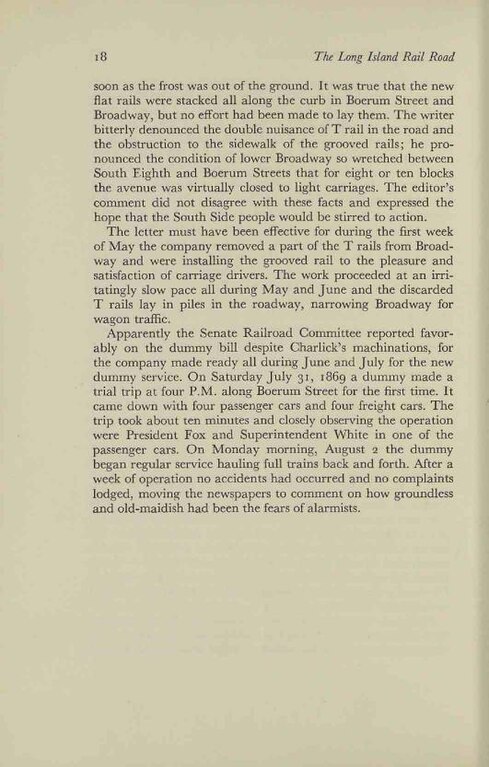soon as the frost was out of the ground. It was true that the new flat rails were stacked all along the curb in Boerum Street and Broadway, but no effort had been made to lay them. The writer bitterly denounced the double nuisance of T rail in the road and the obstruction to the sidewalk of the grooved rails; he pronounced the condition of lower Broadway so wretched between South Eighth and Boerum Streets that for eight or ten blocks the avenue was virtually closed to light carriages. The editor's comment did not disagree with these facts and expressed the hope that the South Side people would be stirred to action.
The letter must have been effective for during the first week of May the company removed a part of the T rails from Broadway and were installing the grooved rail to the pleasure and satisfaction of carriage drivers. The work proceeded at an irritatingly slow pace all during May and June and the discarded T rails lay in piles in the roadway, narrowing Broadway for wagon traffic.
Apparently the Senate Railroad Committee reported favorably on the dummy bill despite Charlick's machinations, for the company made ready all during June and July for the new dummy service. On Saturday July 31, 1869 a dummy made a trial trip at four P.M. along Boerum Street for the first time. It came down with four passenger cars and four freight cars. The trip took about ten minutes and closely observing the operation were President Fox and Superintendent White in one of the passenger cars. On Monday morning, August 2 the dummy began regular service hauling full trains back and forth. After a week of operation no accidents had occurred and no complaints lodged, moving the newspapers to comment on how groundless and old-maidish had been the fears of alarmists.
